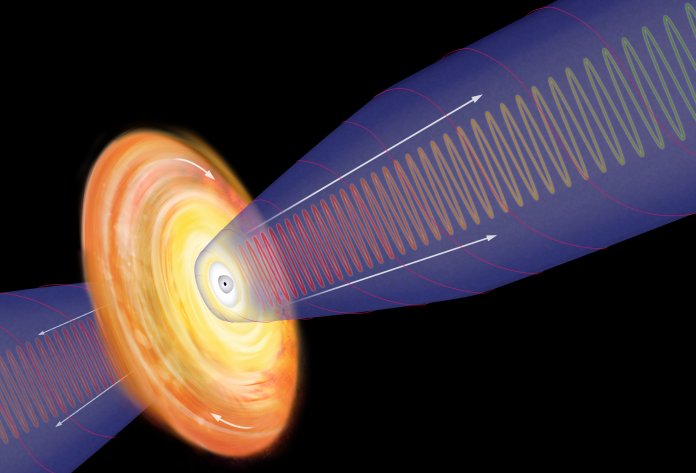Eddie Gonzales Jr. – MessageToEagle.com – New ALMA observations reveal a never-before-seen disk of cool, interstellar gas wrapped around the supermassive black hole at the center of the Milky Way.
This nebulous disk gives astronomers new insights into the workings of accretion: the siphoning of material onto the surface of a black hole. .
Our galactic center is approximately 26,000 light-years from Earth and the supermassive black hole there, known as Sagittarius A* (A “star”), is 4 million times the mass of our Sun.

“We were the first to image this elusive disk and study its rotation,” Elena Murchikova, a member in astrophysics at the Institute for Advanced Study in Princeton, New Jersey, and lead author on the paper, said in a press release.
“We are also probing accretion onto the black hole. This is important because this is our closest supermassive black hole. Even so, we still have no good understanding of how its accretion works. We hope these new ALMA observations will help the black hole give up some of its secrets.”
Until now, however, astronomers have been able to image only the tenuous, hot portion of this flow of accreting gas, which forms a roughly spherical flow and showed no obvious rotation. Its temperature is estimated to be a blistering 10 million degrees Celsius (18 million degrees Fahrenheit), or about two-thirds the temperature found at the core of our Sun.
At this temperature, the gas glows fiercely in X-ray light, allowing it to be studied by space-based X-ray telescopes, down to scale of about a tenth of a light-year from the black hole.
In addition to this hot, glowing gas, previous observations with millimeter-wavelength telescopes have detected a vast store of comparatively cooler hydrogen gas (about 10 thousand degrees Celsius, or 18,000 degrees Fahrenheit) within a few light-years of the black hole. The contribution of this cooler gas to the accretion flow onto the black hole was previously unknown.
Although our galactic center black hole is relatively quiet, the radiation around it is strong enough to cause hydrogen atoms to continually lose and recombine with their electrons. This recombination produces a distinctive millimeter-wavelength signal, which is capable of reaching Earth with very little losses along the way.
Read more – here.
Written by Eddie Gonzales Jr. – MessageToEagle.com Staff






